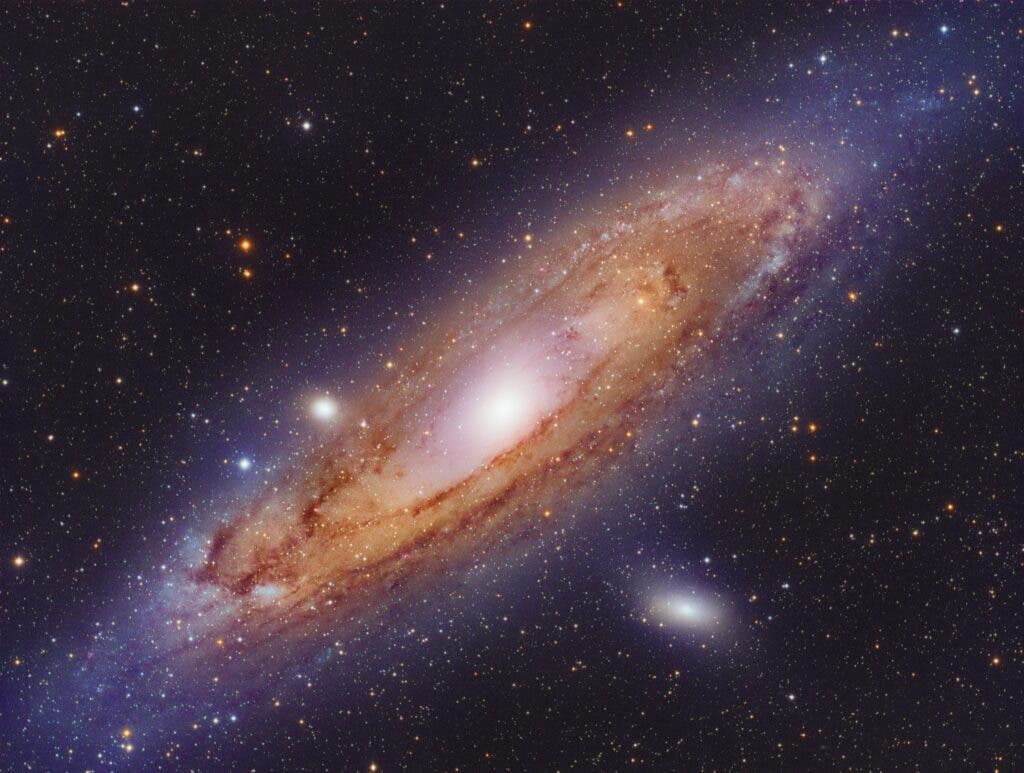A recent study by Riccardo Schiavi, Roberto Capuzzo-Dolcetta, Manuel Arca-Sedda, and Mario Spera shows how the galactic merger between Andromeda and the Milky Way could go down.

Our neighbor in the vastness of the universe, the Andromeda Galaxy (M31), is a spiral galaxy and the biggest one in the Local Group — the galaxy group that includes the Milky Way. M31 is heavier than the Milky Way, in part due to the supermassive black hole keeping the galaxy gravitationally bound being almost 33 times more massive than the Milky Way.
The two galaxies, Andromeda and our own, are slowly heading towards each other — and we’ve known this for quite some time. In 1912, American astronomer Vesto Slipher discovered that the galaxy was coming toward us. Many observations and corrections have improved our understanding of this process, and now, researchers have new insights into this galactic migration and collision.
N-body simulations
To have an idea of how the collision is going to take place, scientists need to first simulate the phenomenon. They use something called N-body simulations, a computer simulation which calculates the motion of particles.
In this type of simulation, you first need to estimate the number of particles which are in the system you are trying to imitate. By ‘particles’ we mean a bunch of massive objects that are in the galaxies. Remember this is an artificial representation of both galaxies, so the N bodies are all the same, it’s not like simulating where the solar system is and all the atoms of the people reading ZME Science, but a more simplistic representation.
Once we’ve established that, we need to define the shape of the Milky Way and Andromeda and have their positions as close to reality as possible.
We know M31 is kind of tilted when facing the Earth and its velocity towards us is around 110 km/s, and that’s one important part of the details. Another important piece of information is the distance from them — which we know today to be 780 Mpc (780 megaparsecs). Take all of these into account and voilà, you have a model.
Then, it’s time to virtually smash some things.
The merge
With everything as close to reality as possible, the astronomers can make a simulation of the collision and merger. The Milky Way and Andromeda will start colliding in 4.3 billion years and fully merge in 10 billion years. It is certainly after the pandemic, so you won’t miss it.
The results have shown that the merging process will produce a giant elliptical galaxy, Milkomeda. The video below shows a time-lapse video of the merging process.
Gravitational waves
The new insight provided by Schiavi and the team shows what will happen to the supermassive black holes (SMBH) at the centers of both galaxies. According to them, the SMBHs will coalesce around 16.6 billion years after the merge.
The team has also estimated what kind of signal the coalescence will leave. The results have shown the emission left would only be detected by a gravitational wave detector sensitive enough, like LISA.

According to a previous NASA simulation, the collision will start in 4 billion years, and the recent simulation suggests a potentially longer wait time of 4-5 billion years. According to the same NASA results, it’s unlikely that all stars will collide. The possible scenario is that many systems, like ours will be pushed to different orbits. What the merging of the SMBHs is going to change for the stars is still unknown.
The study was published in Astronomy & Astrophysics.









